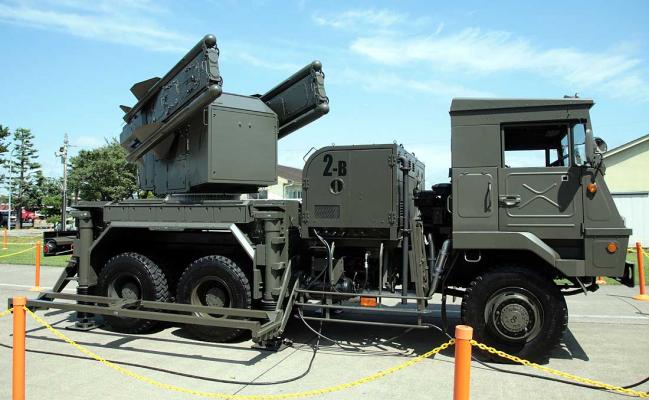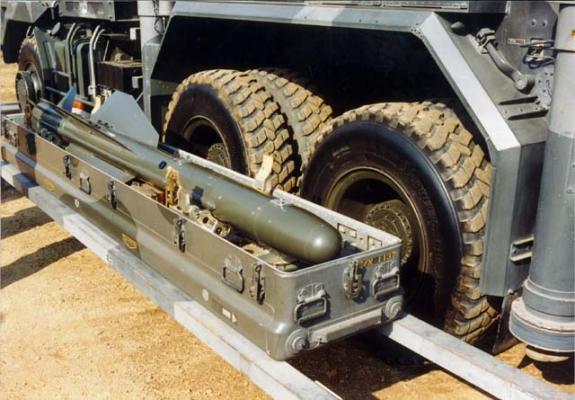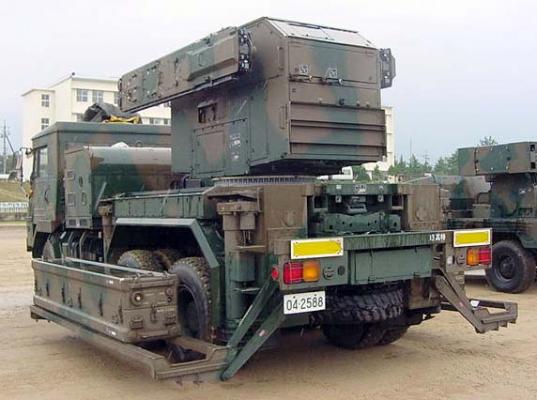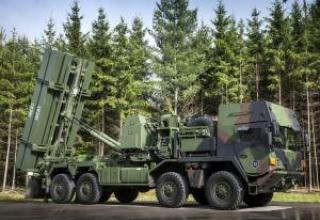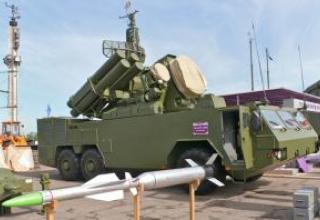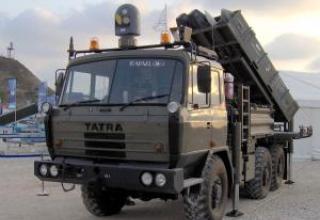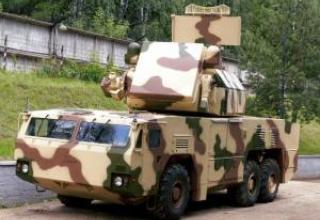Japanese SAM system "Tan-SAM" is designed for air defense of the most important objects in the country, as well as military airfields, naval bases, etc.
The tactical and technical task for the development and creation of the complex was formulated by the Japan Ground Self-Defence Force (JGSDF) Air Defense Command in 1966. The research and creation of prototypes of individual systems of the complex was completed in 1969. In the first half of the 70s, all systems of the complex were tested separately, and successful tests of the complex as a whole were completed in 1978-1979. In 1980 the complex was adopted by JGSDF under the code of Tour 81. The first complexes were located in the northern part of Hokkaido.
Later, the "Tan-SAM" complex entered the service of the Japanese Air Force (JASDF - Japan Air Self-Defence Force), where it is used to provide air defense of air bases as part of mixed air defense battalions along with "Patriot" and "Stinger" man-portable air defense systems.
As of 1995, about 1,800 missiles had been fired. In total, the Japanese Army has 57 "Tan-SAM" systems, Air Force - 30, Navy - 6.
At present, an upgraded version of the Tan-SAM-kai system is being produced, which differs from the prototype in its longer range, interference immunity and combat efficiency. The missile of the "Tan-SAM-kai" complex is equipped with an active radar homing head. The "Tan-SAM-kai" system is produced in series. There is no information about export of the complex.
Composition:
The complex consists of:
- Combat control room,
- two launchers with four missiles on each,
- providing equipment.
The rocket of complex "Tan-SAM" - single-stage, solid-fuel, is executed on the normal aerodynamic scheme. Homing of the missile is combined: inertial on the initial and self-homing with the help of infrared GSN on the final part of the trajectory. Before the launch, the value of the declination angle is programmed by the combat control cabin computers, taking into account the prevention of the launch in the direction of the sun. Once the rocket has launched and reached the point where the CAS is activated, the target area of the space is scanned to find its target. The combat unit is fragmented and equipped with contact and non-contact fuses. The striking radius of a combat unit's shrapnel is between 5 and 15 m, depending on the type of target. Solid fuel engine with a thrust of 8400 kgf provides a maximum flight speed of 840 m/s. Self-liquidation of the missile in case of a large miss is not provided. The complex is not sufficiently protected from false thermal interferences (heat traps fired by airplanes and helicopters). When firing at targets flying at extremely low altitudes in the conditions of strong electronic counteraction of the enemy, as well as with directions where there is a failure of the radar antenna pattern of detection, the guidance of the missile can be transferred to the optical channel. The optical sight is placed on each launcher.
Personal composition of the complex - 15 people. The combat unit consists of the commander, the detection radar operator and two operators of launchers. The distance between the combat control point and the launchers is up to 300 m, communication between them is either by cable or by radio line. The total time of the complex deployment at the new position is 30 minutes. The elements can be removed from their chassis and used stationary, or relocated by V-107II-4/IIA-4 or CH47J "Chinook" helicopters at a distance of up to 100 km.
The total weight of the combat control point is 3054 kg, it is mounted on the modified wheeled chassis of the Tour 73 (6x6), the weight of the chassis is about 3000 kg. It consists of a generator with an output of 30 kW, which is located at the rear of the chassis, and a cabin with equipment. On the roof of the cabin there is a phased antenna grille of pulse-doppler radar (the size of the antenna blade - about 1 m wide and 1.2 - high), which rotates mechanically along the azimuth. The chassis of the combat control station is horizontally supported by three hydraulic supports (outriggers). The cabin is not armoured and is not equipped with a filter-ventilation unit. The radar's detection range is 30 km and there is a system for determining the nationality of the target. Speed of rotation of the phased antenna is 10ob./min. In one turn the area of space is viewed by angle of place from 0 to 15°, by azimuth - roundabout. When the space overview mode is assigned, the PHAR radar looks through the azimuth - any 110°, the space angle - from 0 to 20°.
The combat control station computer system assigns an individual number to each detected target. The routes of the targets with their numbers are shown on the displays as target number, range, altitude and flight direction. The calculation commander assigns priority to the target and indicates to the radar operator the targets to be fired on. The radar operator uses the cursor to mark the selected targets, thus providing a mode of accurate radar tracking of these targets. In total, up to six targets can be selected for this (precise) tracking mode. Each of them is displayed on the display screen together with the values of its coordinates, the rate of information update is 1 s. Information on the coordinates of the targets to be launched by the missiles is received by the missile control system from the combat control station's computer system, which also generates commands for the appropriate rotation of the launchers in the direction of the target. When a priority target enters the area of launch of the system, the light indication at the command post is illuminated and the missile is prepared for launch. The guidance system allows two missiles to be pointed at a target at the same time, or. to point a single missile and, after evaluating the results of its firing, make a decision about firing again. The probability of a single missile hitting its target is 0.75.
The first missile can be launched 8 s after the radar has captured the target, the second 6 s after the first. The other two missiles require approximately 40 seconds to prepare for launch.
The launcher (PU) is mounted on Tours 73 (6x6) chassis. To horizon the PU before launch, it is equipped with four hydraulic supports. The missiles are loaded onto the launcher by means of two hydraulic platforms placed on the machine sides. The rocket in the transport container is placed on the loading platform, manually removed from the container and mounted on rails. The charging time of the launcher is about 3 minutes.
The upgraded Tan-SAM-kai complex uses a missile with an active homing radar head and a new engine, which increased the missile's flight speed and the long range of the kill zone to 14 km. At the initial point of the trajectory, a command radio line is used to correct the missile's flight when shooting at highly manoeuvrable targets. In addition, a thermal imaging camera is installed at the combat control point, thereby increasing the combat efficiency of the system at night and under conditions of strong electronic suppression.
Characteristics:
| Defeat range maximum, km | 7 |
| Defeat range minimum, km | 0,5 |
| Defeat height maximum, km | 3 |
| Defeat height minimum, km | 0,015 |
| The length of the rocket, mm | 2700 |
| Body diameter, mm | 160 |
| Wingspan, mm | 600 |
| Launch weight of the rocket, kg | 100 |
| Weight BC, kg | 9 |
| Flight Speed | 2.4М |
Sources:
- Василин Н.Я., Гуринович А.Л. "Зенитные ракетные комплексы" .-Мн.: ООО "Попурри", 2002- 464с.
- Type-81 Tan-SAM SAM-1J
- Type-81 (http://www.medianetjapan.com)
